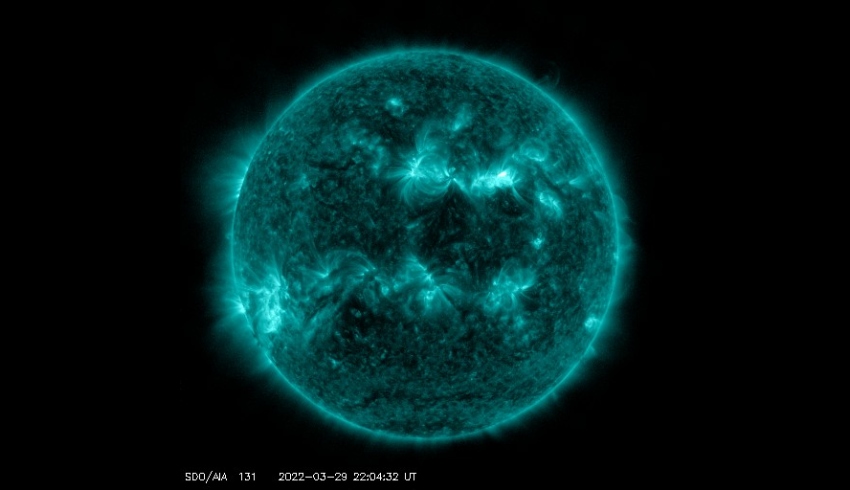According to a not-for-profit Belgium website, SpaceWeatherLive, sunspot region AR2975 has produced the most activity since Monday, such as countless C-class and even M-class solar flares, the severest types.
The increased activity is expected to create strong geomagnetic storms, and auroras may become visible from locations like southern England, the Netherlands, Wellington in New Zealand and Denver in the US in the coming days.
A solar flare is a huge burst of radiation that comes from the sun due to an increase in sunspots. Sunspots – which are areas on the sun that appear darker – emerge frequently during its cycle and can erupt and send explosions of energy towards Earth, such as solar winds (which are less energetic than flares).
“What an exciting two days we are having,” SpaceWeatherLive said in a blog post.
“Yesterday’s M4.0 [of sunspot AR2975] solar flare of course being the strongest thus far. This M4.0 solar flare and a smaller M1 solar flare launched two coronal mass ejections into space, both of which have an earth-directed component.”
Similar to solar flares are coronal mass ejections (CMEs), which are massive bubbles of gas laced with magnetic field lines that are ejected from the sun over the course of several hours, according to the European Space Agency (ESA).
According to Spaceweather.com, a sun-tracking website, the AR2975 has produced 11 C-class solar flares and six M-class flares, and more are expected.
NASA and the National Oceanic and Atmospheric Administration (NOAA) said the next CME is expected to occur at midnight on Thursday, 31 March, which will likely generate a strong geomagnetic storm.
According to a computer model, the third CME will be created by the first two merging together into a single “Cannibal CME” before striking Earth’s magnetic field.
Cannibal CMEs are fast and sweep up slower CMEs in front of them, according to Spaceweather.com.
While the sun is early in its 11-year cycle, which began in 2019, a busy season of sunspots is expected to emerge from 2023 to 2028.
The cycle is when the sun’s magnetic field between the north and south changes polarity – essentially, its inner magnetic dynamo reorganises itself.
It has been known to vary from eight to 15 years, according to Swinburne University researchers, and this is why there is an emergence of sunspots that generate solar flares.
Bill Murtagh, program coordinator at NOAA said the rise in solar cycle is “our awakening phase”, and the sun is moving into a solar maximum.

Isabella Richards
Bella Richards is a journalist who has written for several local newspapers, her university newspaper and a tech magazine, and completed her Bachelor of Communications (Journalism) at the University of Technology Sydney in 2020. She joined Momentum Media in 2021, and has since written breaking news stories across Space Connect, Australian Aviation and World of Aviation.
You can email Bella on: [email protected]

